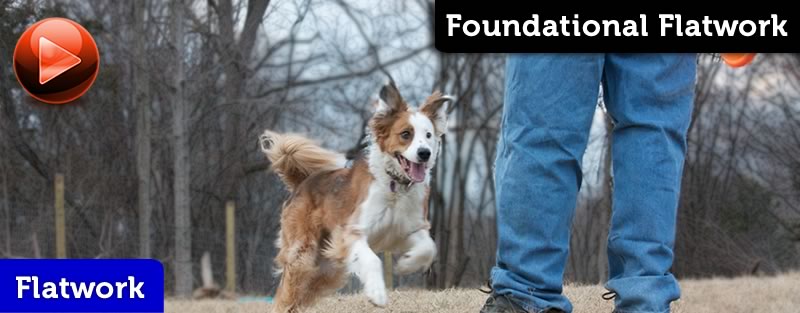
Disc Dog Flatwork Foundation
This video lays out our baseline Flatwork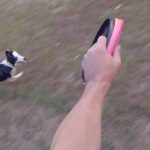 Flatwork is the stuff that happens between the catches. How the team moves and transitions, often without the disc, is flatwork. Flatwork concepts in disc dog are taken from the agility and herding... More Foundation. We are teaching the dog the movements involved, but like Foundational Set Up Moves
Flatwork is the stuff that happens between the catches. How the team moves and transitions, often without the disc, is flatwork. Flatwork concepts in disc dog are taken from the agility and herding... More Foundation. We are teaching the dog the movements involved, but like Foundational Set Up Moves Set Up Moves are tricks that are used to establish timing and position in disc dog freestyle. Traditional tricks include: Around, Through, Backwards Through, and Scoot, but any or all of your tricks,... More, we are really focusing on the hand to hand cue and the resulting shoulder orientation that tells the dog to change direction. This drill teaches Front
Set Up Moves are tricks that are used to establish timing and position in disc dog freestyle. Traditional tricks include: Around, Through, Backwards Through, and Scoot, but any or all of your tricks,... More, we are really focusing on the hand to hand cue and the resulting shoulder orientation that tells the dog to change direction. This drill teaches Front Front is a stable position directly in front of the handler. Front is an traditional obedience skill. Usually your dog sits in this position, but standing is often acceptable as well, especially in... More and Rear crosses at the foundational level and is entirely compatible with the Set Up Move drill.
Front is a stable position directly in front of the handler. Front is an traditional obedience skill. Usually your dog sits in this position, but standing is often acceptable as well, especially in... More and Rear crosses at the foundational level and is entirely compatible with the Set Up Move drill.
What is a Cross?
A cross is an agility skill where the dog and handler switch sides. So if the dog is on Heel (to the handler’s Left) a Cross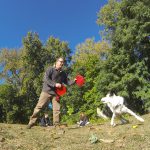 A Cross is an canine agility term that describes a change of working sides. Your dog moves from your left to your right (Heel to Side) or from Clock to Counter. Crosses are... More would finish with the dog on Side (the handler’s Right). Performing a crsoss means that the handler moves the dog from one side of the handler’s body to the other. When disc doggers send their dogs around, that is known as a Blind Cross
A Cross is an canine agility term that describes a change of working sides. Your dog moves from your left to your right (Heel to Side) or from Clock to Counter. Crosses are... More would finish with the dog on Side (the handler’s Right). Performing a crsoss means that the handler moves the dog from one side of the handler’s body to the other. When disc doggers send their dogs around, that is known as a Blind Cross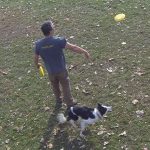 A Blind Cross is a change of working sides behind the handler or without a visual connection. An Around is a variation of a Blind Cross. More in the agility world. We perform many variations of crossing during the course of a freestyle jam, but we’re going to focus in on two in particular: the Front and Rear cross.
A Blind Cross is a change of working sides behind the handler or without a visual connection. An Around is a variation of a Blind Cross. More in the agility world. We perform many variations of crossing during the course of a freestyle jam, but we’re going to focus in on two in particular: the Front and Rear cross.
Front Cross
A Front Cross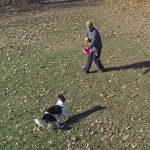 On a Front Cross, your dog switches Flanks in with you in front of them. From Clock to Counter Clockwise Flank or vice versa. Taken directly from the canine agility world, the Front... More takes place when the handler is in front of the dog, on the dog’s line. This kind of a cross asks the dog to turn towards the handler. So a Front Cross can be considered a move where the dog and handler switch sides by the handler crossing the dog’s path or the dog turning towards the handler. It’s a little weird to think about (even for agility folk, sometimes…) so let’s just define it and get the foundation together and we’ll worry about fully understanding it next week. 😉
On a Front Cross, your dog switches Flanks in with you in front of them. From Clock to Counter Clockwise Flank or vice versa. Taken directly from the canine agility world, the Front... More takes place when the handler is in front of the dog, on the dog’s line. This kind of a cross asks the dog to turn towards the handler. So a Front Cross can be considered a move where the dog and handler switch sides by the handler crossing the dog’s path or the dog turning towards the handler. It’s a little weird to think about (even for agility folk, sometimes…) so let’s just define it and get the foundation together and we’ll worry about fully understanding it next week. 😉
Rear Cross
A Rear Cross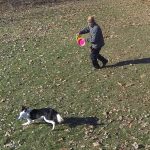 On a Rear Cross, the dog switches Flanks with the behind her. From clock to counter clockwise Flank or vice versa. Taken directly from the canine agility world, the Rear Cross is a... More takes place when the handler is behind the dog. This kind of Cross has the dog turning away from the handler. The dog is moving away from the handler on Heel and the handler crosses the path of the dog with the dog winding up in Side position. Again, it’s fairly confusing to think about right now, so let’s just work the drill until we apply it next week.
On a Rear Cross, the dog switches Flanks with the behind her. From clock to counter clockwise Flank or vice versa. Taken directly from the canine agility world, the Rear Cross is a... More takes place when the handler is behind the dog. This kind of Cross has the dog turning away from the handler. The dog is moving away from the handler on Heel and the handler crosses the path of the dog with the dog winding up in Side position. Again, it’s fairly confusing to think about right now, so let’s just work the drill until we apply it next week.
Practical Application
Here’s a quick video with Leilani Demonstrating some Flatwork. Keep in mind Leilani has done this kind of Flatwork for a couple years, so she kinda rocks…





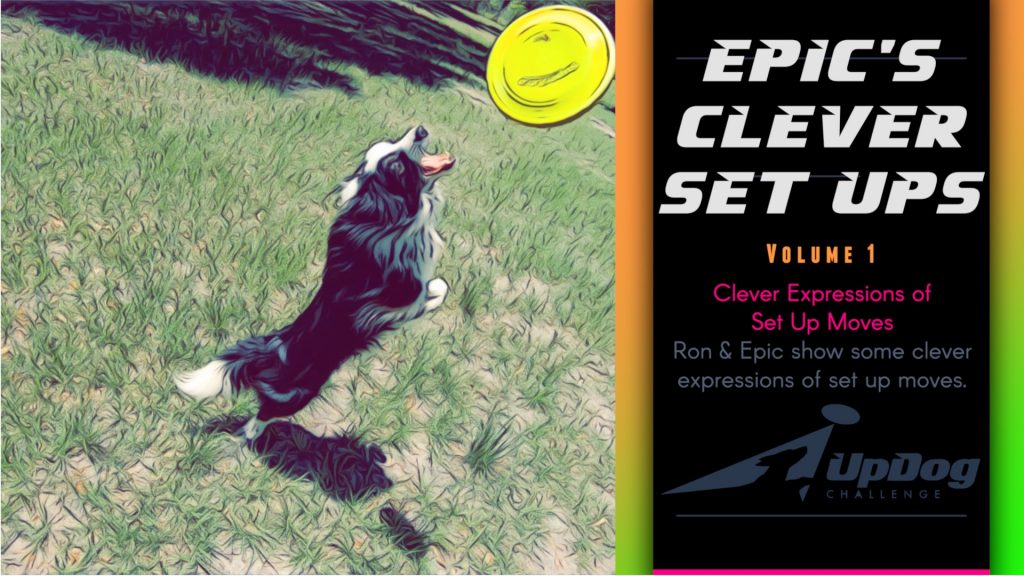
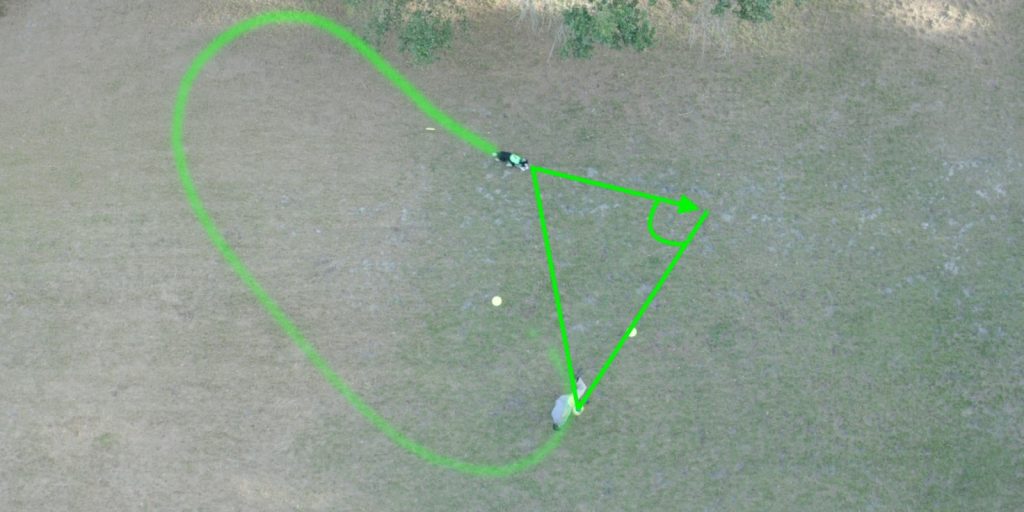
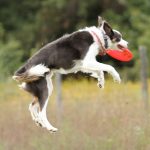
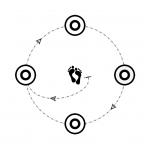
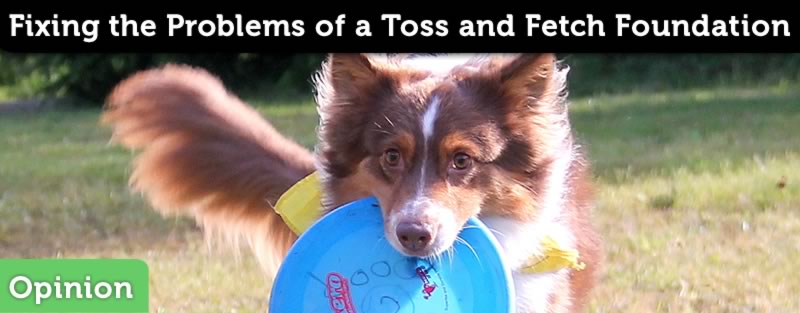
Wow Ron that pair of moves looks sweet!
I have bad co-ordination skills and get confused with this type of move. It will be an interesting challenge for me.
Questions will be firing after a few practices so be ready *laugh*
Hey Marion,
Yea, the front and rear crosses are pretty sweet, especially with Miss Outrun 2001, Rokalele.
This skill is super weird feeling. It’s quite awkward and not at all easy to do, especially with those of us with 2 left feet.
Best I can tell you on the rear cross:
dog is in heel… then…
Scoop forward with left hand as you step with right leg luring the dog out front… THEN (super important)
reach over and match hands and transfer cookie (actually take it out of your left hand)… then
lure the dog to turn away from you… then
as the dog commits, walk in the other direction… mark and reinforce when they are in side position.
Super simple… not very easy.
Hopefully we can get some videos posted and some discussion going so we all can hash this out.
Take your time. A mirror might be your friend here.
Peace
How about breaking the Rear Cross down into 4 simple and concrete steps:
Does that make sense to everybody?
I think here both my boys catch rear and front cross. With Blue it was a little difficult, he’s always working to high but with Ozz… wow he’s like a sponge 🙂 Anyway hope to find tomorrow someone to hold camera, i want to see myself.
Great drill
Bruno & The Merle Gang
Ron,
I am lost n that breakdown I do not know the training lingo.
I am slowly working on things and am thankful for the extra week because I am finding it hard to get it all in with two dogs and having a life *laugh*.
I hope by late next week to have a video of the drills to send you. This week it will just be some disc playing if I can get it done.
Marion
OK…
I will cut another video here tonight or tomorrow with the new lingo. I think the 4 steps will work quite well. We had to break it down like this a few weeks ago with someone who was here at a B&B stay. It’s a little harder to write it down.
How are you doing on the Foundational Set Up Moves and Foundational Position?
Did those lessons make sense?
Peace
Ron
I practiced without my dogs a few times before brining them into it. Seamed to help with my
delivery and working out were to step and how to use my hands. With the match, is it before the turn , on the turn or after the turn. At the finish do keep the dog standing or finish with a sit
then toss. I think it may not matter so much or dose it.
Good idea, Jeff.
The match happens before the turn. That’s really important. otherwise you are essentially throwing both hands in one direction and the handler’s shoulders don’t turn.
Don’t worry about a sit at the end it’s not necessary and not even desirable.
Peace,
Ron
Hi Ron,
I will look forward to the new 4 move video. Thanks muchly!
I am working on the set up and positioning moves when I can and hope we are getting them.
My girls are much smarter then I am and I am sure want to tell me to get it together *laugh*
When I am working the cross overs I am confusing us but think we are working towards we will be getting is soon part.
Marion
Here it is, Marion:
http://pvybe.com/disc-dog-foundation-course/week-1-setup-and-position/reframing-and-refining-the-rear-cross/
peace
We were discussing terminology last night and I wanted to give you the opportunity of correcting me if I misunderstood.
Shaping – We take an existing behavior and shape it into a better one, crooked sit into straight sit.
Free Shaping – Dog does behavior even by accident and then get’s a click/reward.
Luring – you use a treat to lure the dog into the correct behavior where they get click/reward.
Variable Reinforcing – you don’t reward every time but you say yes or click every time. You vary the number of times you will reward the behavior with a cookie
Variable marking – you vary the number of times you say yes or click.
If I forgot something or misunderstood please fill in the blanks.
Yes, that’s the gist… not the words I’d use, but that’s pretty much it.
Variable reinforcement vs variable marking is a construct of mine, it’s not anything that other trainers are going to get based on the words themselves. It would have to be explained for them to understand.
Peace
Hi Ron, in “What is a cross” you mentioned there are other variations of cross. Can you make a very short description, please 🙂
Thank you
Bruno
(finally i found the way to display my name and not username )
Well, there is a Blind Cross, that Agility people avoid like the plague these days. A traditional disc dog Go Around is a blind cross. There is a Flip, which is not really a Cross, but more of a peeling off kind of move. I’m sure there are more.
A Through or Backwards Through can be a Cross. An Over can be a Cross… a Scoot… Any time the dog shifts from working on heel to working on side could be considered a Cross. Vaults, Throughs, Overs, are crosses where the Dog and Handler meet at the same point in time and space. I don’t think they have a ‘Cross’ name for that. I’ve been thinking of naming it, actually. We had an interesting situation crop up in a recent training session that is pretty cool that might require we name it.
Great question, Bruno.
peace
Cool ! 🙂 Flips with switching heel side
Thank you Ron.
Bruno
Ron
How about the crash cross
I’m going to shoot my Treat to Toy video in the morring I hope its not late for to asses
jeff
No problem on the assessment, Jeff…
And the Crash Cross is called the Agony of Defeat over here. It’s attempted every once in a while… 😉
Ron have you got a different que for every direction of a rear Cross (front cross too) or is it just squib every time. For example he sits by side on the left (heel) and we try a rear cross. I guess that is a squib. Then we try a rear cross when he is on my right (side). Is it a squib again? I am introducing ques so I was wandering whether there is a distinct que for every direction or is a squib a more generalized concept, so later on when we are doing flat work the dog understands the way he has to turn just by hearing the squib and reading the movement of my body? My guess is No2 but you never know, since in all other moves there is a distinction between left and right (sit, spin, around etc)
Take care
Georgios
One of the definitions of a rear cross is: Turn Away from Me. It is the same cue regardless of the dog’s position.
Thanks for your reply Ron, just wanted to be on the safe side
Goof fun inventing cues! We use basketball terms for Lupo’s moves.
Front cross is a fake: Like dribbling to the left, fake it then change direction to the right.
Rear cross is a pivot: Like dribbling one way then change direction turning on your back
Drop is a pass: Obvious one
Lupo does all the set up moves perfectly except from the crosses, where he barks, growls and is super aggresive chasing the lure. I tried reseting, quiting the game when he barks etc. Nothing worked. Dont get me wrong he still does the cross, but it is just too much. Finally this morning I decided to just ignore it in hope that it fades away. Either way I needed some space so I started tossing the cookie on the floor to give me some space on his return. And somehow problem is solved, he doesnt bark and he exectues perfectly. I am buffled… Am I avoiding the problem or was this the solution? Was it just a case of releasing some pressure from the handler by reinforcing out there? What do you think Ron?
If the problem is not happening, is it a solution? 😉
Most of the time, the first step is diagnosing the problem and the second step in solving problems is ensuring that the problem doesn’t happen or get worse while we’re trying to fix it.
We use this kind of solution frequently. It’s fast and simple. Once the dog starts to be successful and is confident in the behavior, then we can begin to challenge them without frustration and/or failure standing in the way.
Great job, G…
Peace~
I get it Ron, thanks. Sometimes I go by the book when I should be looking for a way around it if it is not working instead of taking the head on solution.
Thanks for the reply,
Great insight, G… That’s totally it. Why bother taking it head on and struggling, when you can just slide up next to it and push it out of the way.
We really like to come at things from the side when we’re having problems.